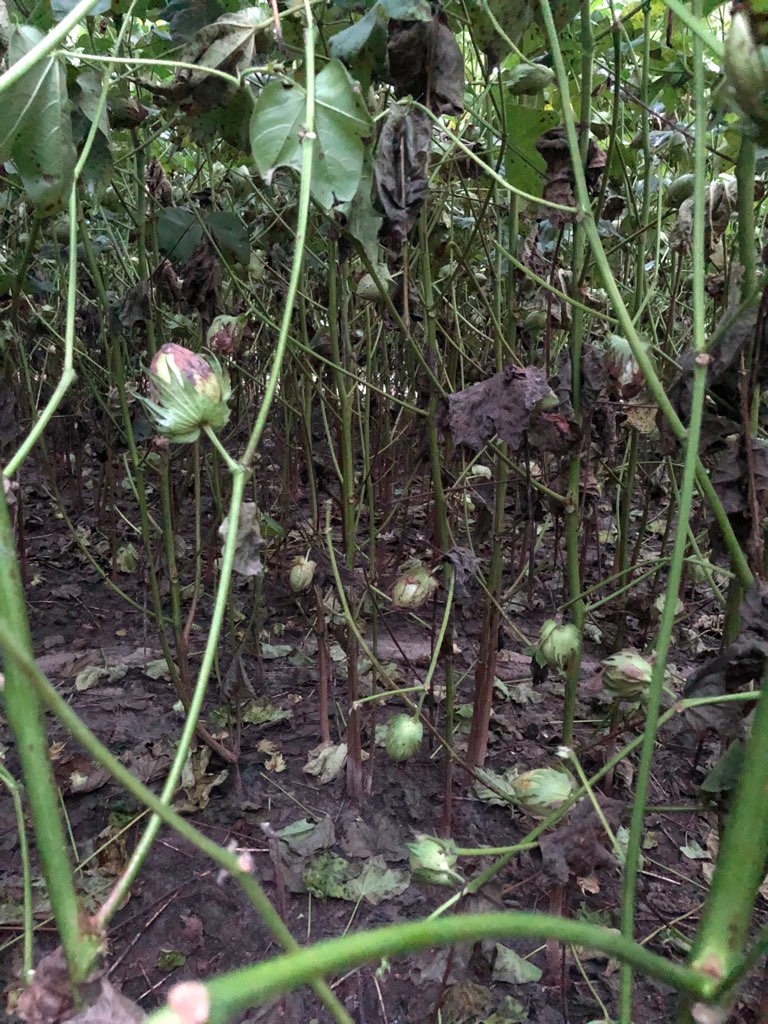Cotton
Overall, the cotton crop looks good to date, with the exception of a few areas where fruit retention is poor. I have been discussing this with many people around the state, and we are not alone. I believe that the poor retention is due to a combination of plant bug damage (mostly tarnished plant bug and some clouded plant bug) and other environmental issues (rain and clouds). However, I can say that we have treated more fields than we have ever treated for plant bugs, and it is still on-going. I have been speaking with Dr. Phillip Roberts often, and he has told me that we have treated more cotton (statewide) for plant bugs than in any other season in his career. But… plant bugs are sporadic and every field should not be treated! Here are a few points I would like to make regarding plant bugs in cotton:
- Scout your fields regularly.
- Use multiple methods of checking plants: square retention, sweep nets, drop cloths, pull up plants and examine overall fruit/square retention over whole plant.
- Use thresholds and treat fields accordingly.
- These insects can cause serious damage and yield loss. This is not one we want to mess around with.
- Treatment recommendations will vary depending on the individual field. In some situations, imidacloprid may provide adequate control, but in “problem fields”, I would recommend Centric, Transform, or even Bidrin. But as I said, this should be a field by field evaluation.



Target spot has started popping up in places as well. If humid, wet conditions continue, we will also continue to see more target spot. The disease does not always reduce yield, but I have seen fields where it definitely has (see picture below). If you have a field with a history of the disease or a field with “rank” growth, I would spray. Some growers will spray every acre as an insurance policy, and in a year like we have had so far, I can’t disagree with that decision. Fungicide applications for target spot should be made between 1st and 6th week of bloom when the disease starts to appear, or if spraying preventatively, make applications starting at 1st-3rd week. In the words of Dr. Bob Kemerait in regard to treatment options for target spot: “Priaxor and Miravis Top are best, next best Headline, last best Quadris/Abound.”

Corn
Some of our earliest planted corn has reached R6 (physiological maturity or black layer) and looks really good. However, southern rust was confirmed in Bleckley County on Friday, June 16. If your corn is at dough stage (R4) or beyond, I am not concerned, but if you have corn younger than that, I would strongly consider a fungicide application to protect the crop. Depending on the age of some fields, multiple applications may be necessary. Keep in mind that this disease can be detrimental to a corn crop if given the opportunity.

